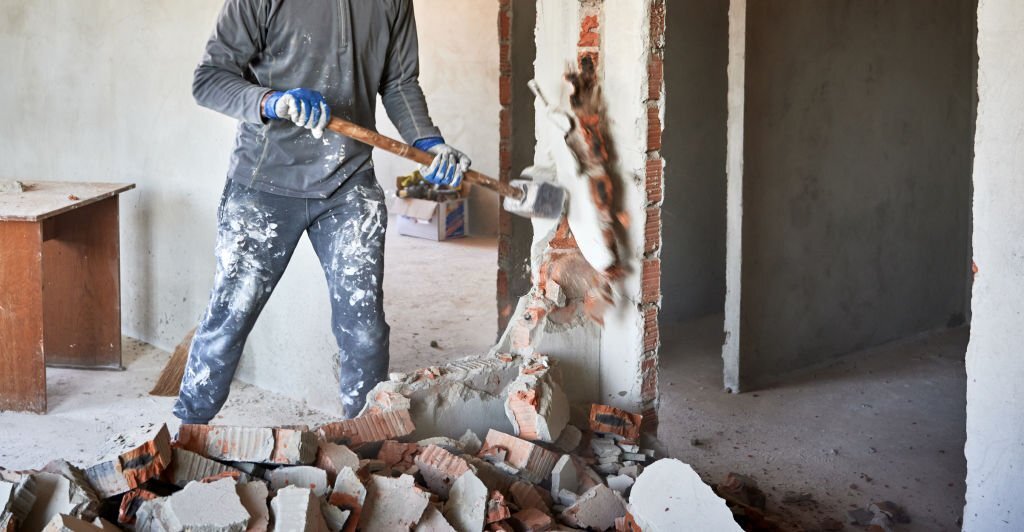
Introduction:
In the world of construction and demolition, where precision and efficiency are paramount, demolition hammers have emerged as indispensable tools for structure dismantling. These powerful machines, available in various types, are designed to tackle a wide range of demolition tasks with unmatched force and precision. In this comprehensive article, we will delve into the role of demolition hammers in efficiently dismantling structures, exploring their working principles, applications, and how they have revolutionized the demolition industry.
1. Understanding Demolition Hammers:
Demolition hammers, also known as jackhammers or pneumatic drills, are robust construction tools designed to break through tough materials like concrete, asphalt, masonry, and rocks. They use high-impact force to fracture and dismantle structures, making them invaluable in construction and demolition projects where precision and speed are essential.
2. Types of Demolition Hammers:
a) Hydraulic Demolition Hammers: Powered by hydraulic systems, these hammers generate immense force, making them suitable for heavy-duty demolition tasks. They are commonly used in large-scale projects, such as demolishing reinforced concrete structures or breaking down foundations.
b) Pneumatic Demolition Hammers: Pneumatic hammers rely on compressed air to deliver powerful blows. They are lighter and more portable than hydraulic hammers, making them ideal for tasks that require maneuverability, such as indoor demolitions or renovations.
c) Electric Demolition Hammers: Electric hammers are versatile and suitable for medium-duty demolition jobs. They are more compact and quieter than hydraulic and pneumatic hammers, making them suitable for residential areas or noise-sensitive environments.
3. Working Principles of Demolition Hammers:
a) Impact Mechanism: The heart of a demolition hammer lies in its impact mechanism. This mechanism consists of a piston that moves up and down rapidly, striking the chisel or bit at the end of the hammer. The repetitive high-impact blows deliver the necessary force to break through tough materials.
b) Chisel Selection: Different chisel attachments can be used with demolition hammers, such as pointed chisels for precise breaking and flat chisels for larger surface area demolition. The choice of chisel depends on the nature of the demolition task and the material being targeted.
4. Applications of Demolition Hammers:
a) Concrete Demolition: Demolition hammers are highly effective in breaking down concrete structures, including walls, pillars, and pavements. Their power and precision enable controlled and efficient concrete removal.
b) Asphalt Removal: For road construction and repair projects, demolition hammers can be used to remove asphalt surfaces quickly and easily, preparing the area for resurfacing.
c) Masonry and Brickwork: When renovating or repurposing buildings, demolition hammers can dismantle masonry walls, brickwork, and tiles, allowing for swift and precise deconstruction.
d) Rock Excavation: In geological projects or construction involving rocky terrains, demolition hammers help excavate rocks and boulders efficiently.
5. Efficiency and Precision in Demolition:
a) Speedy Dismantling: Demolition hammers offer impressive speed in dismantling structures, significantly reducing project timelines compared to manual methods.
b) Targeted Dismantling: The precision of demolition hammers allows operators to target specific areas for dismantling, minimizing collateral damage, and preserving surrounding structures.
c) Versatility: With various types of demolition hammers and interchangeable chisel attachments, operators can adapt to different demolition tasks with ease.
6. Safety Considerations:
a) Operator Training: Proper training is crucial for operators to handle demolition hammers safely and effectively, reducing the risk of accidents.
b) Personal Protective Equipment (PPE): Operators must wear appropriate PPE, including helmets, safety glasses, gloves, and hearing protection, to safeguard against potential hazards.
c) Inspection and Maintenance: Regular inspection and maintenance of demolition hammers are essential to ensure optimal performance and prevent malfunctions during operations.
7. Environmental Impact: While demolition hammers offer unparalleled efficiency, their use may generate noise and vibration that can impact the surrounding environment and nearby residents. Implementing noise reduction measures and adhering to local regulations can mitigate these effects.
Conclusion:
Demolition hammers have become indispensable assets in the construction and demolition industry, offering efficiency and precision in the dismantling of structures. With their various types, operators can adapt to different projects, ranging from large-scale concrete demolitions to smaller-scale residential renovations. Understanding the working principles and safety considerations is vital to harness the full potential of demolition hammers while ensuring a safe and controlled demolition process. As technology continues to advance, we can expect further innovations in demolition equipment, leading to even greater efficiency and precision in structure dismantling for future construction projects.

